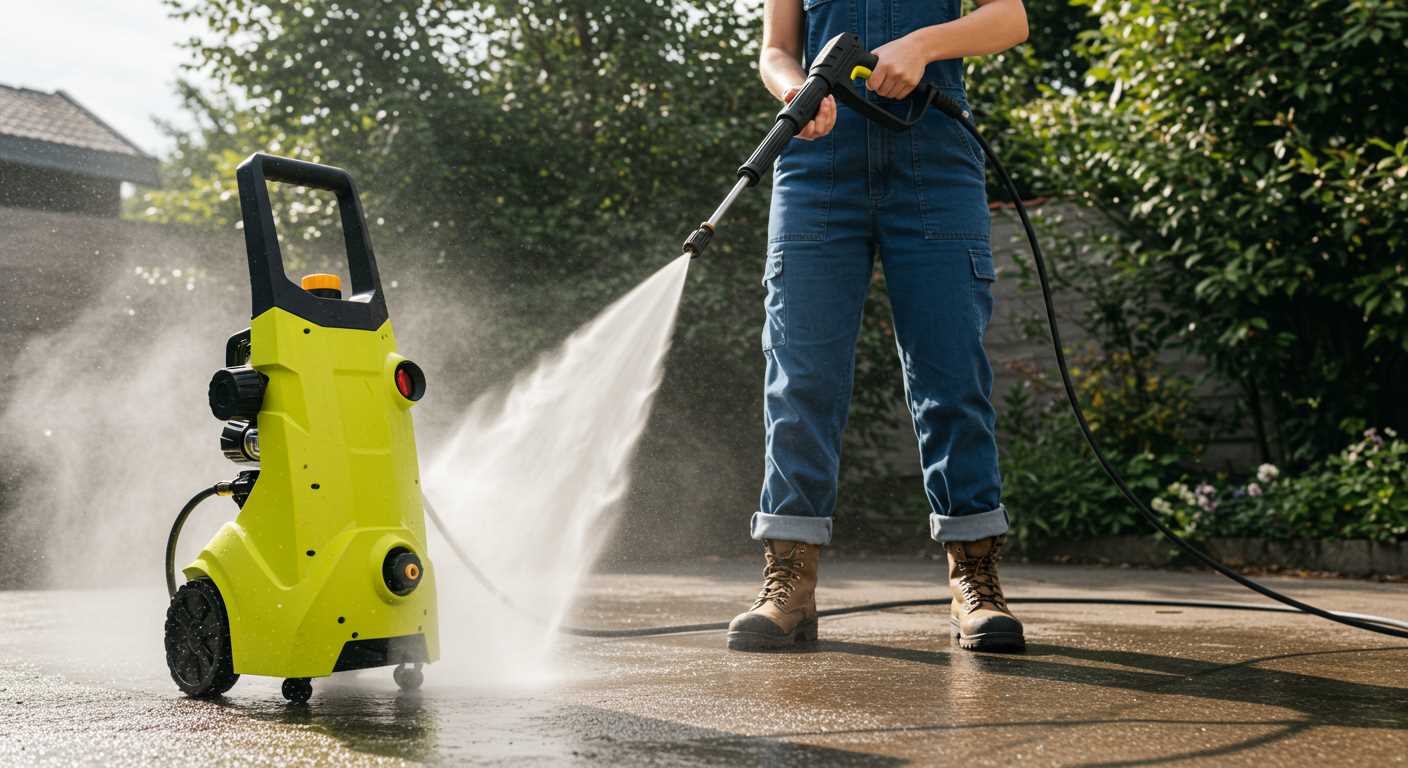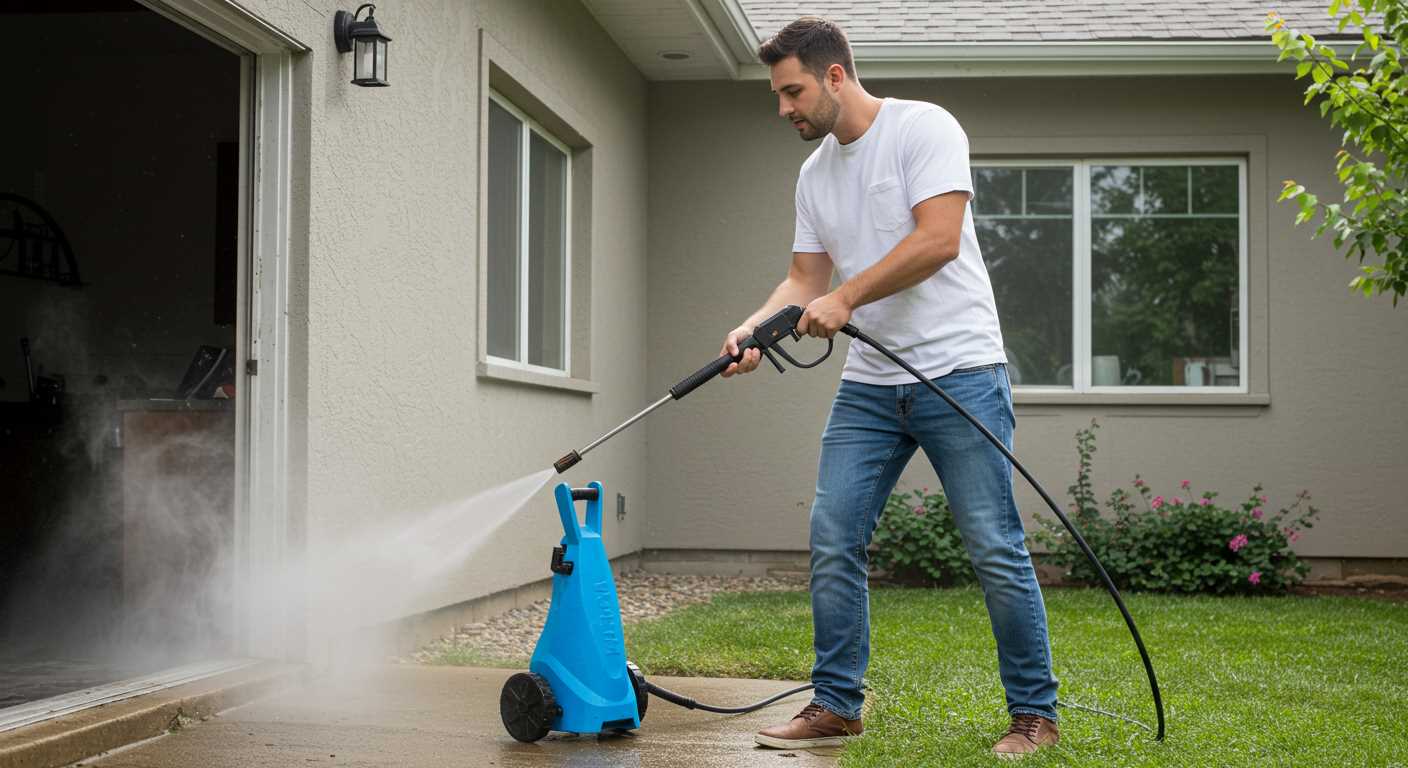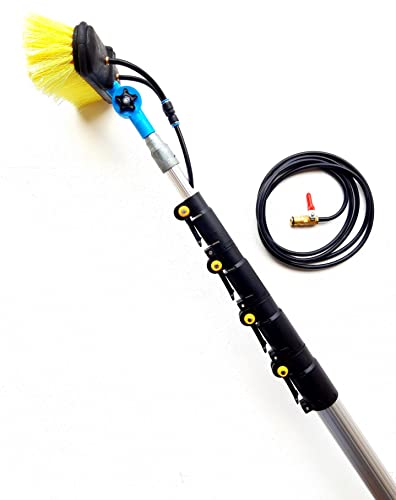



To achieve quieter operation, consider selecting equipment specifically designed with sound-dampening features, such as noise-reduction insulation and quieter pump technology. These models can significantly diminish the decibel output during use, providing a more pleasant experience for users and those nearby.
My experience reveals that various factors contribute to the loudness of these machines. The type of motor–electric motors tend to generate less noise than their gas-powered counterparts–plays a pivotal role. Additionally, the pump’s design and materials directly influence sound levels; high-performance models often operate at higher RPMs, resulting in increased noise.
Maintaining the appliance is critical for noise management. Regular inspections and adjustments can prevent vibrations and rattling, common culprits behind excessive sound. Using high-quality hoses and connections can further minimise unwanted noise, enhancing not only performance but also comfort during operation.
High Decibel Levels Uncovered
To manage the volume produced by these cleaning devices, consider models equipped with quieter motors and incorporate soundproofing materials. Researching brands that emphasise reduced noise output can significantly enhance your experience. Notably, electric variations often generate less sound compared to gas alternatives, which tend to be more robust and consequently louder.
Sound Dampening Techniques

Investing in aftermarket sound reduction kits can be an effective approach. These kits typically contain mufflers and enclosures designed to absorb and reflect noise, leading to quieter operation. Additionally, operating on softer surfaces such as grass or soil instead of hard concrete can mitigate noise levels, as the ground absorbs more sound.
Operational Considerations
Using specific nozzles also influences noise. For instance, wider nozzles reduce pressure and, in turn, often result in lower sound levels. Regular maintenance plays a significant role; ensuring components are well-lubricated and free from debris not only enhances performance but can also contribute to a quieter operation. Aligning correct maintenance with strategic usage will lead to a more pleasant cleaning process.
Understanding the Mechanics of High-Pressure Cleaners
To grasp why these devices produce significant noise, it’s essential to examine their core components. The pump is the heart of any high-pressure cleaner, converting rotational energy into hydraulic pressure. The mechanisms inside the pump, particularly the pistons and valves, create sound as they operate swiftly to intensify water pressure.
Piston Mechanism
The pistons are crucial for generating high pressure. As they move back and forth within the cylinder, they create a rapid cycle of compression and release that contributes to noise levels. Materials used in construction also affect sound production; metal components tend to resonate more than plastic alternatives. Higher RPM (revolutions per minute) in electric models often correlates with increased volume due to faster component movement.
Motor Dynamics
The motor, whether electric or petrol-powered, supplements noise output as well. Petrol engines tend to be louder than electric motors due to combustion processes and exhaust systems. Additionally, the design of the motor housing can influence sound propagation. Using acoustic dampening materials within the housing can significantly reduce noise levels without sacrificing performance. Maintaining proper lubrication and functionality of parts also ensures less strain and noise during operation.
The Role of Electric vs. Gas-Powered Models

For those seeking quieter cleaning solutions, understanding the differences between electric and gas-powered options is vital. Electric models generally produce less noise during operation, making them more suited for residential settings where sound levels matter. They often operate around 60-75 dB, while gas alternatives can reach 85 dB or more, which can be disruptive in quiet neighbourhoods.
Comparison of Noise Levels
| Type | Noise Level (dB) | Typical Uses |
|---|---|---|
| Electric | 60-75 | Home cleaning, light-duty tasks |
| Gas | 85+ | Heavy-duty tasks, commercial use |
Electric units excel in terms of convenience, often allowing for immediate use with minimal setup. The electric motor’s design also contributes to lower vibrations, further reducing noise. Conversely, gas-powered machines, although louder, deliver higher pressures and flow rates, making them effective for tougher cleaning jobs and larger areas.
Operational Considerations
While noise is a significant factor, consider performance aspects based on your cleaning needs. Electric models may struggle with heavy grime but excel in smaller, household tasks. Gas versions offer more power, sacrificing some quiet for efficiency. When selecting a model, evaluate your cleaning frequency, required power, and acceptable sound levels to find the right balance for your situation.
Impact of Pump Types on Noise Levels

For those considering the acoustics of high-pressure cleaning devices, the type of pump significantly influences sound output. Piston pumps, known for their robust performance, often produce higher decibel levels compared to axial pumps due to their construction and operation. When high pressure is required, pistons force water at rapid intervals, creating a distinct sound that may be jarring in residential areas.
Conversely, axial pumps generally operate more quietly. Their design utilises a rotating mechanism that allows smoother water flow, resulting in reduced noise. The trade-off here often involves pressure output, where axial systems may deliver lower psi than their piston counterparts.
Additionally, the overall assembly of the unit impacts noise. A well-designed enclosure may absorb or dampen sound, mitigating the harshness felt during operation. Therefore, selecting a model with vibration-dampening technology can significantly reduce operational noise, regardless of the pump type.
In practice, if minimising noise is a priority, opting for an axial pump with additional sound insulation is advisable. However, for maximum cleaning power, and if noise level is less critical, a piston design might be the better choice. Understanding these differences can lead to a more informed selection tailored to your specific needs.
How Noise Levels Contribute to Usability Issues
Excessive sound can be a significant barrier when operating cleaning equipment. Users often face challenges in terms of comfort and functionality during tasks that require these machines.
Impact on User Experience
High decibel levels may lead to fatigue, reducing the time one can effectively use such devices. Operators might experience:
- Increased stress, leading to decreased concentration.
- Difficulty communicating with others nearby, affecting teamwork during larger jobs.
- Potential hearing damage from prolonged exposure without proper ear protection.
Community Considerations
Neighbours may also be affected by the noise. Users in residential areas should consider:
- Time of day when using machines to avoid disturbing others.
- Choosing quieter models or electric variants, which generally produce less sound.
In certain locales, noise regulations may impact usability and limit operational hours, making it essential to stay informed about local rules. Selecting quieter equipment not only improves personal comfort but also fosters a better rapport with neighbours.
Effective Strategies for Noise Reduction
To decrease sound output during operation, consider investing in models designed with noise-reducing features. Look for machines equipped with sound-dampening casings or modified motor technology specifically for quieter use.
Use of Acoustic Barriers
Implementing acoustic barriers, such as soundproofing materials or strategically placed enclosures, can significantly attenuate overall volume. Simple measures like thick curtains or padded walls can absorb sound waves effectively.
Regular Maintenance

Routine upkeep can notably lessen unwanted noise. Ensure that all components are well-lubricated and aligned. Worn-out parts or loose fittings can increase vibration and noise levels. Inspecting the unit periodically for any irregularities can prevent sound escalation.
Legal Considerations and Noise Regulations

For individuals or businesses using high-powered cleaners, understanding local noise regulations is imperative. Many municipalities impose strict limits on acceptable sound levels, particularly in residential areas. Knowing the specifics of these rules can prevent potential fines and community disputes.
Local Noise Ordinances
Local noise ordinances vary widely; some areas restrict noise during certain hours, often prohibiting operations early in the morning or late in the evening. It’s essential to research these ordinances in your region prior to usage. Checking with local government websites or community boards can provide up-to-date information on the acceptable decibel levels and designated quiet hours.
Environmental Impact Assessments

In more sensitive areas, such as those near schools or hospitals, additional environmental impact assessments may be necessary. This could involve examining noise pollution’s effects on local wildlife and community well-being. Engaging with local authorities for guidance ensures compliance and helps mitigate any unforeseen repercussions from operating loud equipment.







